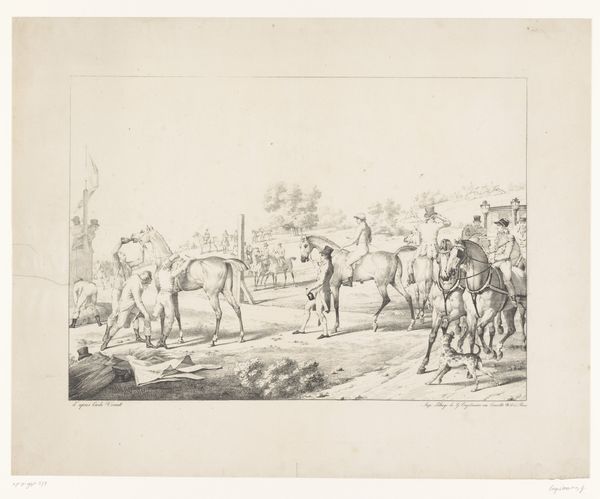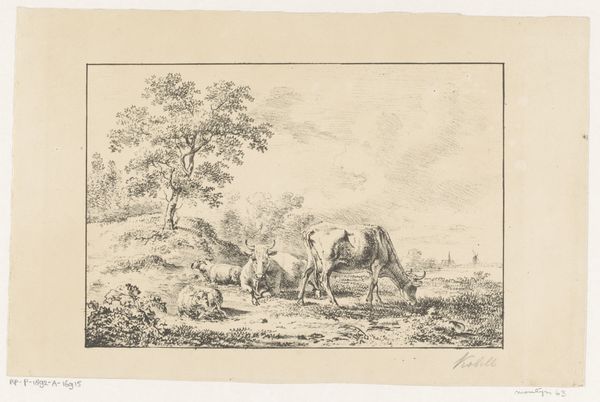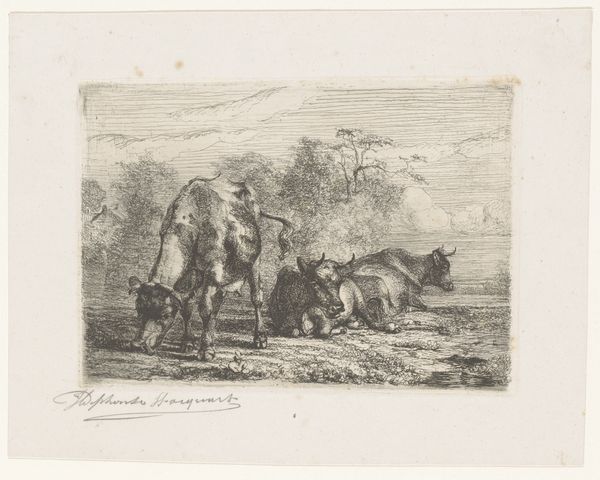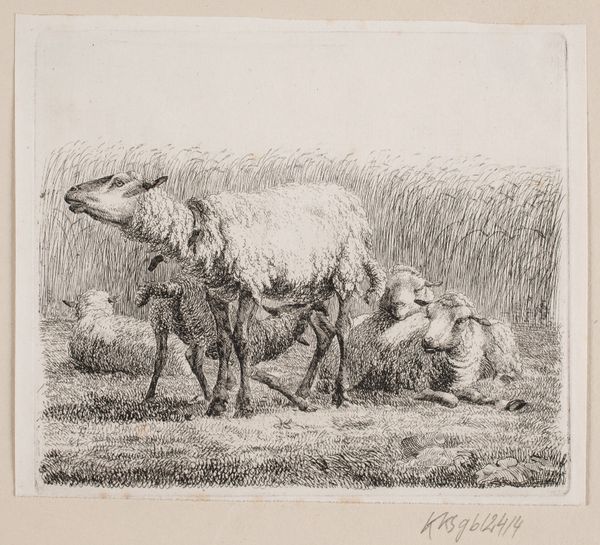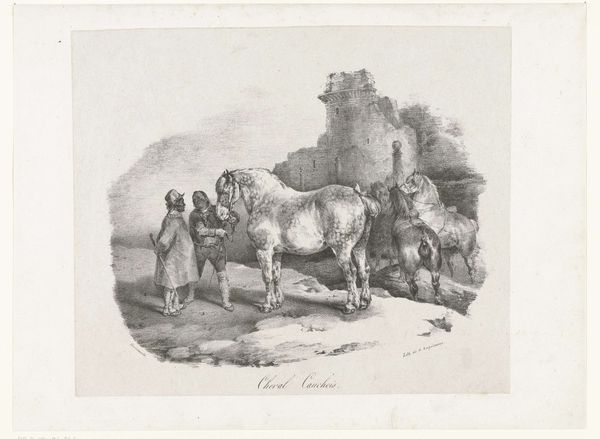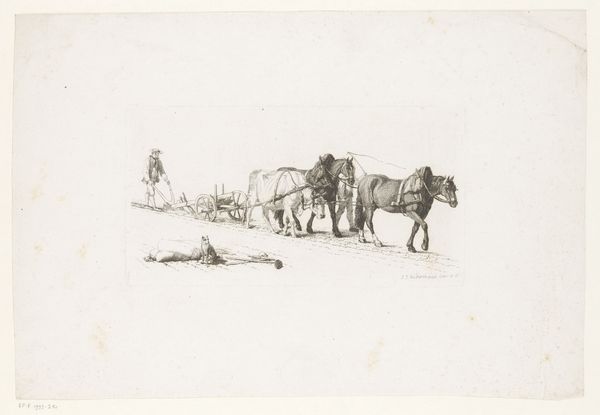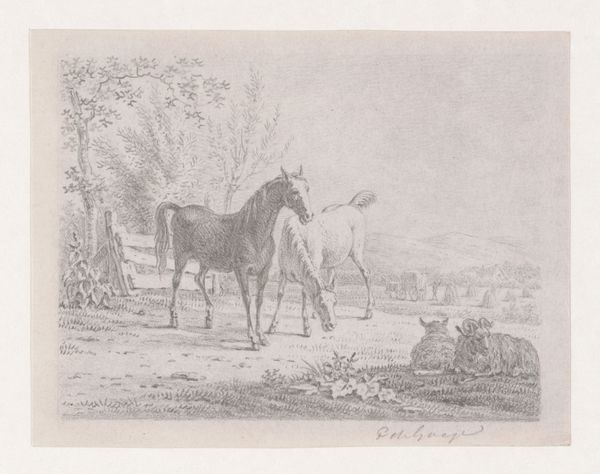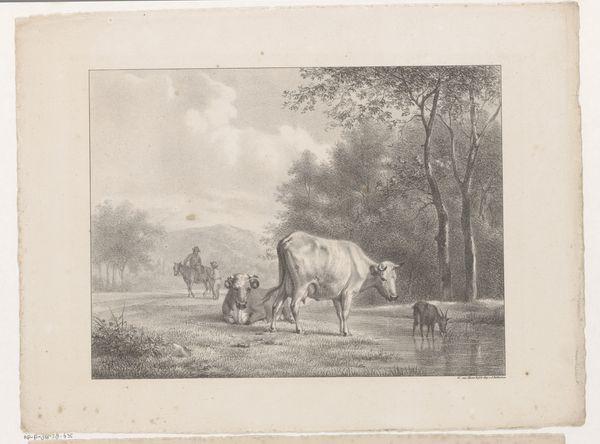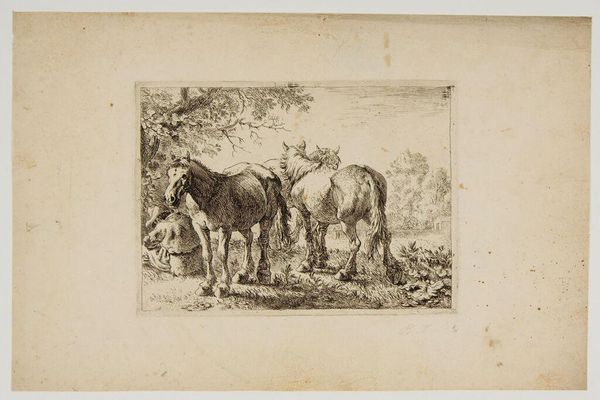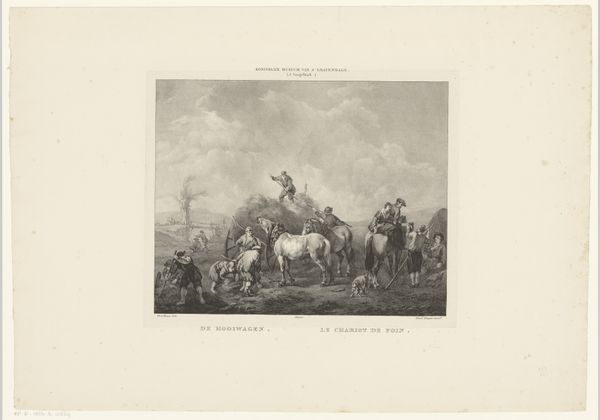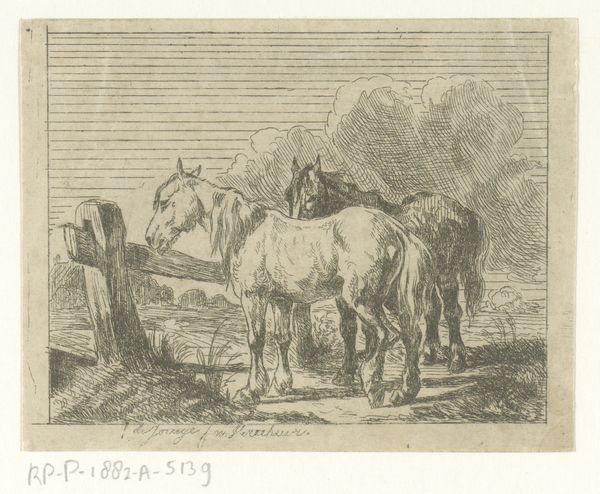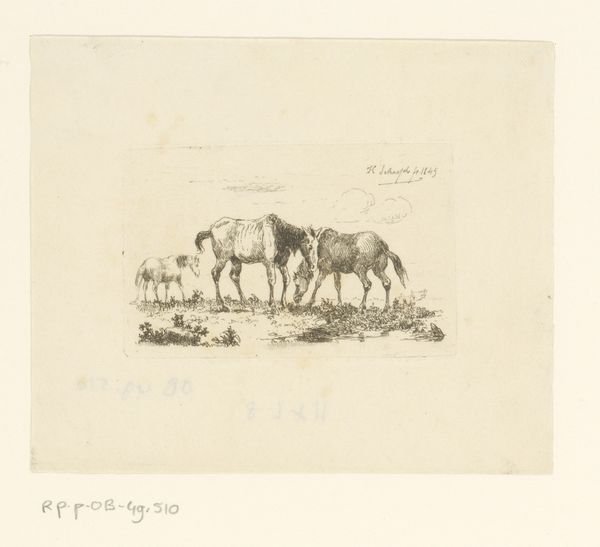
Bivouac of the Dragons of the Italian Guard near Wittenberg on the Tenth of June n.d.
0:00
0:00
drawing, lithograph, print, paper
#
drawing
#
lithograph
# print
#
landscape
#
paper
#
genre-painting
Dimensions: 295 × 464 mm
Copyright: Public Domain
Curator: Let’s turn our attention to this print. The Art Institute holds a lithograph called "Bivouac of the Dragons of the Italian Guard near Wittenberg on the Tenth of June" by Albrecht Adam. Editor: Ah, there’s such a stillness to it, considering the title evokes… dragons. A huddle of horses, some figures nestled by what looks like a haystack – a quiet moment. A surprisingly bucolic military scene. Curator: It's precisely that contrast that makes Adam's work interesting. He's capturing, and perhaps subtly romanticizing, the everyday reality of military life during the Napoleonic era. Look at the men: some are alert, yes, but others seem utterly exhausted. Editor: Absolutely. There's a kind of intimate fatigue in the way those figures are drawn, almost sketched into the scene. They blend into the earth around them, you know? It makes you think about the cost, the weight, of these campaigns…even on the winning side, it feels somehow. Curator: Indeed. Consider Wittenberg, a town with deep historical significance, once linked to Luther and the Reformation, now just another resting point for soldiers far from home. The print underscores the intrusion of conflict into otherwise ordinary landscapes. Editor: The horses too… they’re so beautifully rendered, but there's a melancholy to them. It’s as though even these magnificent animals are burdened by the journey. It strikes me how prints like this, though perhaps intended as documentation, become incredibly poignant expressions of humanity in the face of conflict. It’s not glorifying anything; it’s just showing. Curator: And in showing, it makes visible a part of the story often overlooked in grand narratives of war and conquest: the mundane experience of those who fought it. The social impact ripples out, visualized. Editor: It's an interesting perspective—that everyday life under pressure, the intimate experience made quietly monumental on a humble lithograph. There’s power in this subtlety; you feel it in your gut more than your intellect. Curator: I concur. By giving prominence to ordinary moments, it gives viewers the means to form a human connection across history.
Comments
No comments
Be the first to comment and join the conversation on the ultimate creative platform.
